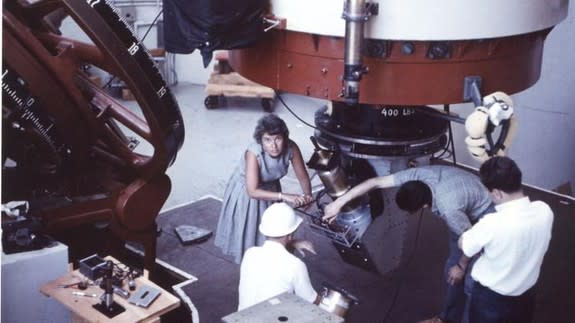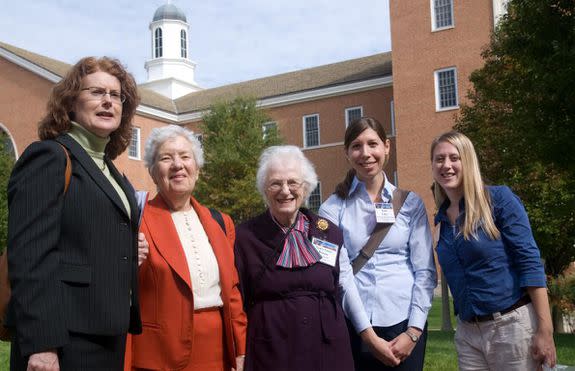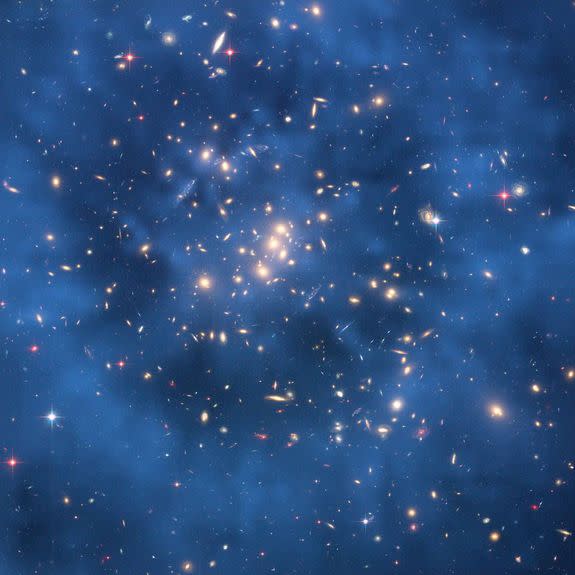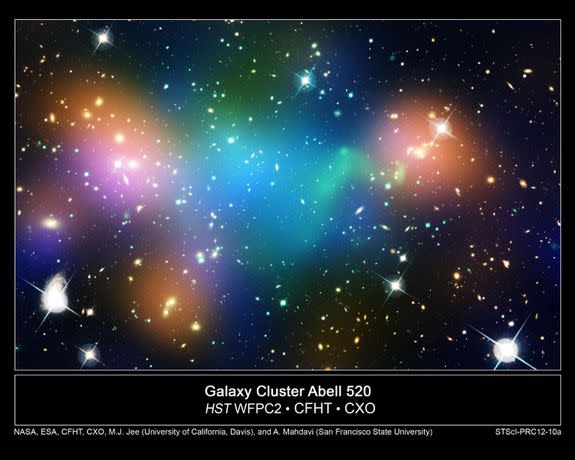Farewell to Vera Rubin: Badass astronomer and feminist icon

The pioneering astronomer Vera Rubin is known globally for discovering powerful evidence of dark matter in the universe.
But Rubin, who died Sunday at age 88, is also renowned for her passionate efforts to make space for women in the male-dominated field of astronomy.
SEE ALSO: John Glenn, all-American badass astronaut, dies at 95
The astronomer was never awarded a Nobel Prize in physics, despite her ground-breaking work and her supporters' efforts to highlight Rubin's achievements to the committee. In fact, no woman has won the prize for physics in more than five decades.
Vera Rubin (neé Connor), was born July 23, 1928, in Philadelphia. She began working in astronomy at a time when no woman had worked inside the Palomar Observatory, a world-renowned research facility in San Diego, California.
Only a few universities even accepted women in their astronomy programs, and virtually none of the nation's prestigious scientific organizations counted women as members.

Still, Rubin has said she wasn't deterred.
She only had to look to her childhood idol, the 19th century astronomer Maria Mitchell, to know the field wasn't limited to men.
"It never occurred to me that I couldn't be an astronomer," she said in a 1989 interview.
Rubin studied astronomy at Vassar College, where Mitchell had taught until 1888. After graduating in 1948, Rubin said she initially considered Princeton University for graduate school.
But the dean of the Princeton program declined to send her the academic catalogue, explaining that since the school didn't accept women, there was no point.
Sad to report the death of Vera Rubin. Classic interview with this pioneer of dark matter: https://t.co/WEaVc9Be5h pic.twitter.com/XbEFeqnx2g
— Corey S. Powell (@coreyspowell) December 26, 2016
The young astronomer persisted, earning a master's degree from Cornell and her doctorate at Georgetown University before joining the Carnegie Institution's Department of Terrestrial Magnetism.
Then she took a trip out West. In 1965, she became the first woman to officially access the Palomar Observatory as a guest investigator.
Yet the astronomer recalled not feeling completely welcome. Although she was allowed in the building, she couldn't use any of the urinal-studded restrooms.
"She went to her room, she cut up paper into a skirt image, and she stuck it on the little person image on the door of the bathroom," Neta Bahcall, an astrophysicist and Rubin's former colleague, told Astronomy.com earlier this year.
"She said, 'There you go; now you have a ladies' room.' That’s the type of person Vera is," Bahcall said.

Image: NASA, ESA, M. J. JEE AND H. FORD ET AL. (JOHNS HOPKINS UNIVERSITY)
As Rubin was breaking boundaries, she was also revolutionizing our understanding of the universe.
After observing dozens of spiral galaxies by the 1970s, Rubin and her colleague at Carnegie, Kent Ford, discovered that visible mass wasn't responsible for rotating the stars. Instead, they found that another force — dark matter — was likely at work.
According to NASA, scientists are more certain of what dark matter is not than what it actually is.
It is not in the visible form of stars and planets, nor in the form of dark clouds of normal matter. It is also not antimatter, which annihilates matter with gamma rays. Dark matter is also not a galaxy-sized black hole.
Whatever it is, scientists estimate dark matter accounts for 27 percent of the universe, compared to just 5 percent for normal matter.
Throughout her career, Rubin examined more than 200 galaxies.

Image: NASA
In addition to her work, Rubin advocated for women in science throughout her career, pushing for more women to be employed at the San Diego observatory.
She lobbied continuously to include greater numbers of women in the National Academy of Sciences, whose members are among the top researchers in their fields. She also successfully helped dismantle the men-only policy at the Cosmos Club, a historic social club in Washington, D.C., with members in science, literature and the arts.
Whenever she came across a conference agenda that included few or no women speakers, she would call up the organizers and "tell them they have a problem and need to fix it," Bahcall told Astronomy.com.
On Monday, following news of Rubin's death, Bahcall said in a statement that "Vera was an amazing scientist and an amazing human being" and a "champion of women in science, a mentor and a role model to generators of astronomers."

Image: NASA, ESA, D. Coe (NASA Jet Propulsion Laboratory/California Institute of Technology, and Space Telescope Science Institute), N. Benitez, T. Broadhurst, and H. Ford.
For her scientific achievements, Rubin received the National Medal of Science, America's highest scientific award, in 1993. Three years later, she became the first woman to receive the Royal Astronomical Society's Gold Medal since 1828, when Caroline Hershel was awarded the prize.
Rubin was also elected to the National Academy of Sciences in 1981, but a Nobel prize never eventuated.
Despite the Nobel committee's oversight, Rubin has long expressed satisfaction with her life's work.
"Fame is fleeting," Rubin told Discover magazine in 1990. "My numbers mean more to me than my name. If astronomers are still using my data years from now, that's my greatest compliment."
Rubin died Dec. 25 of natural causes, her son Allan Rubin told the Associated Press. She had been living in the Princeton, New Jersey area.

